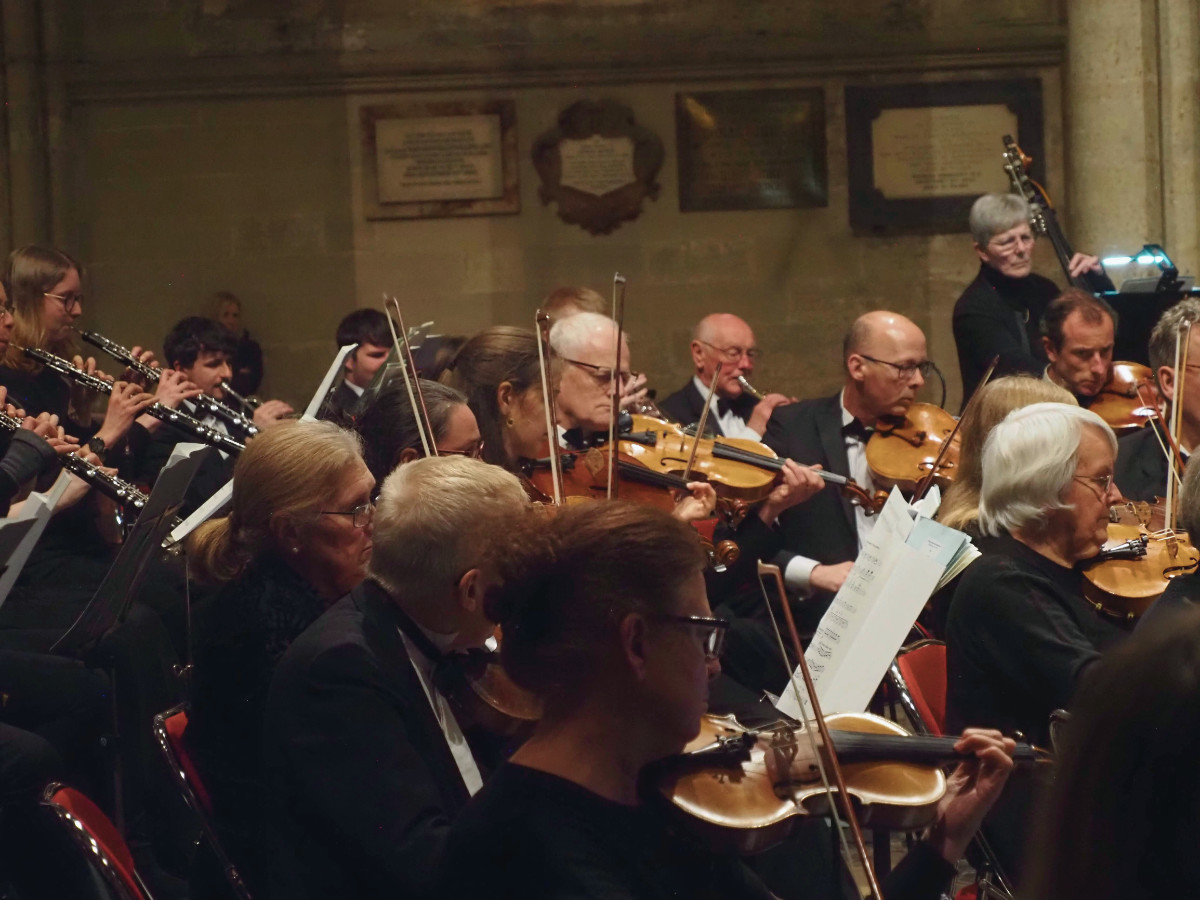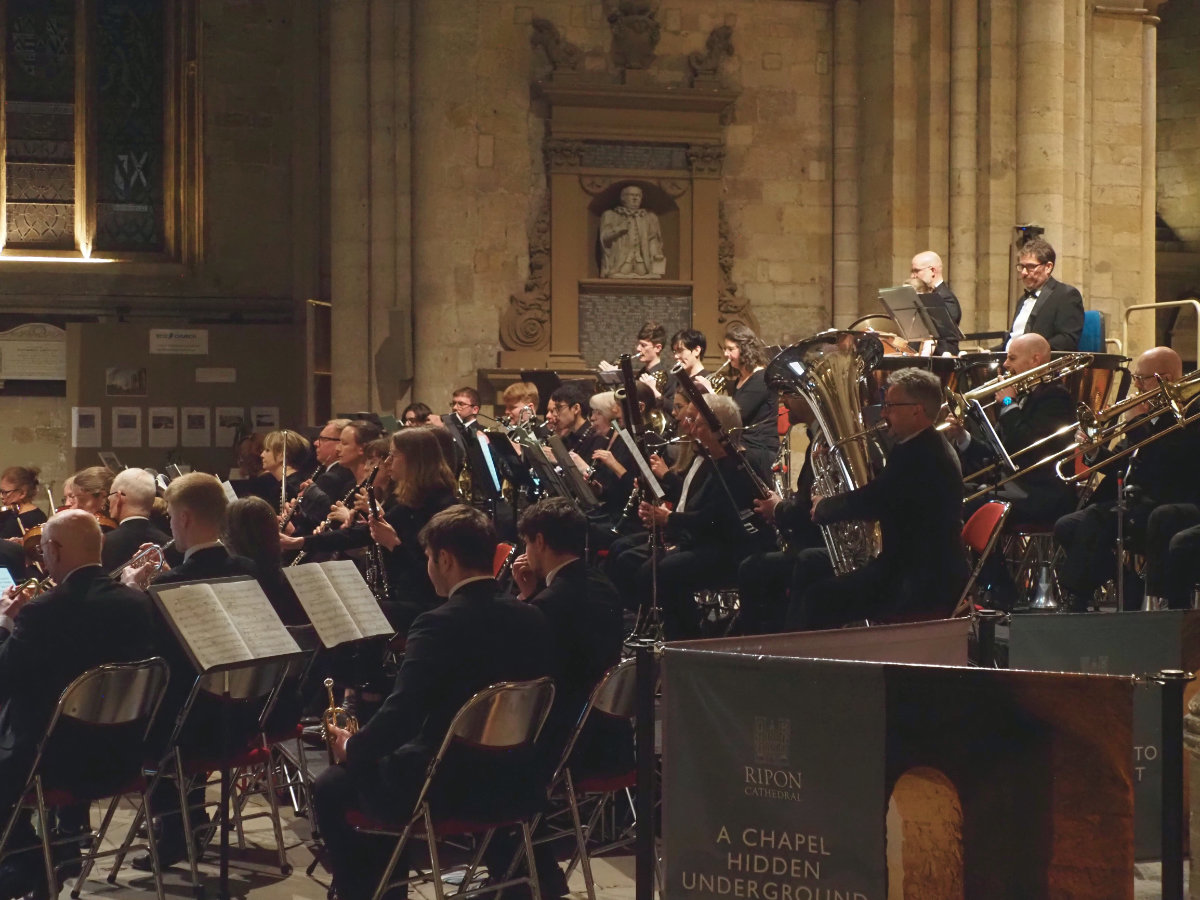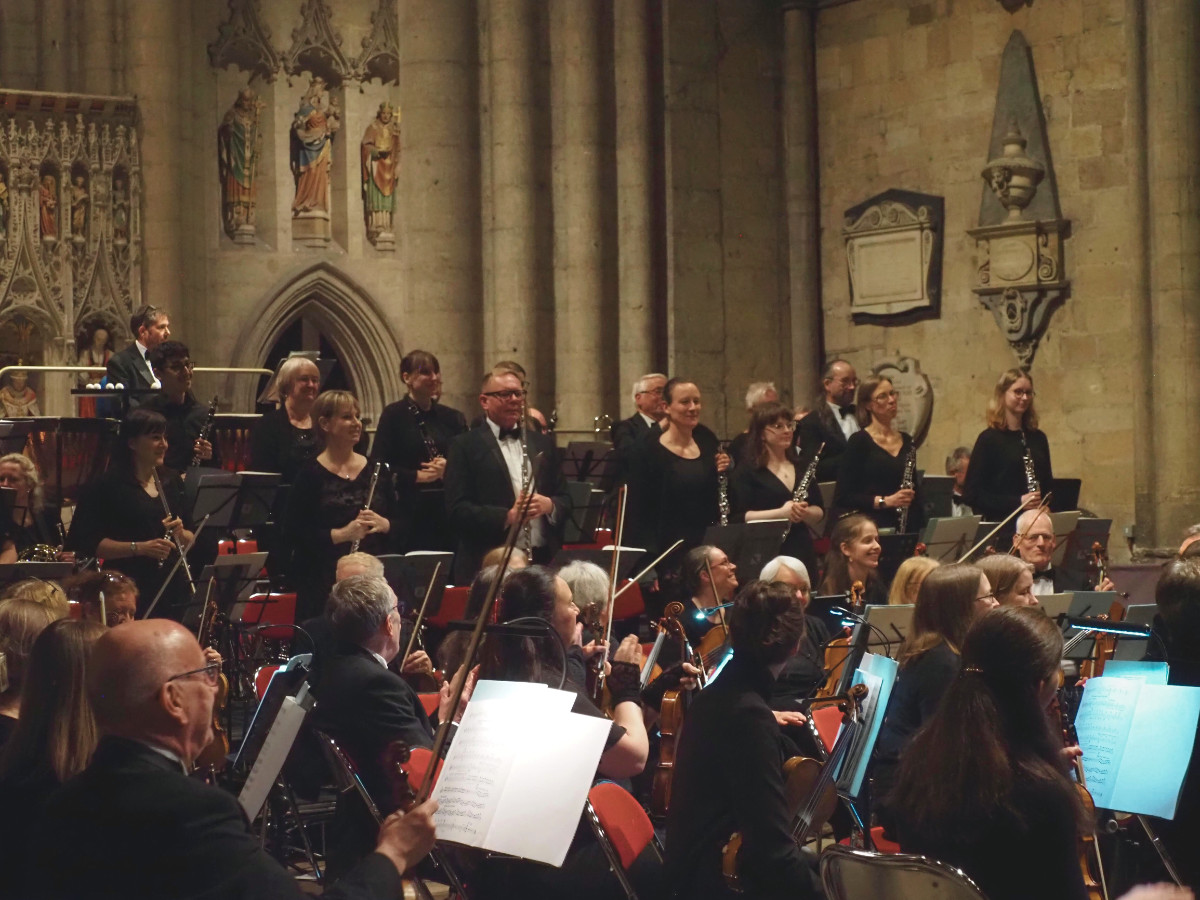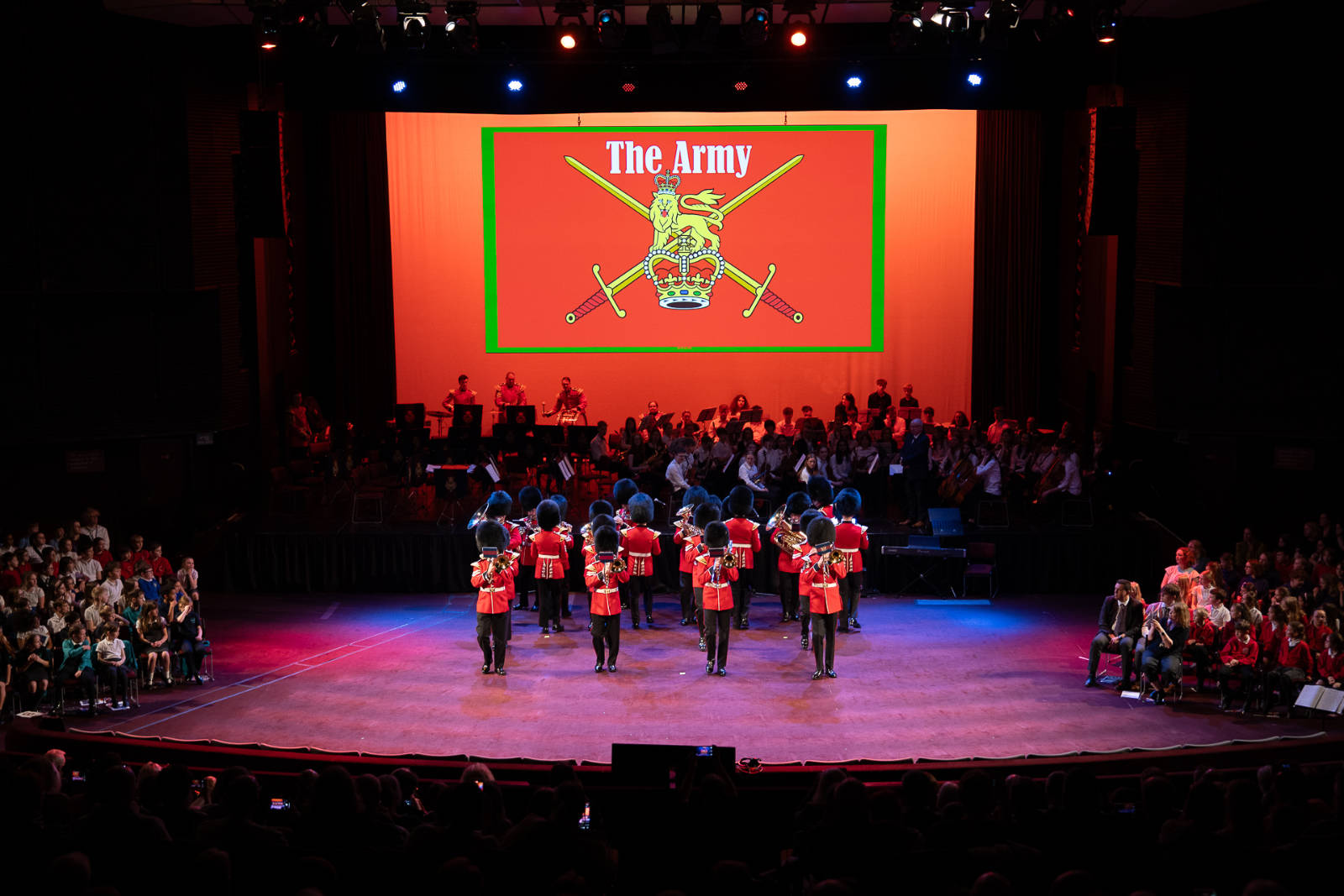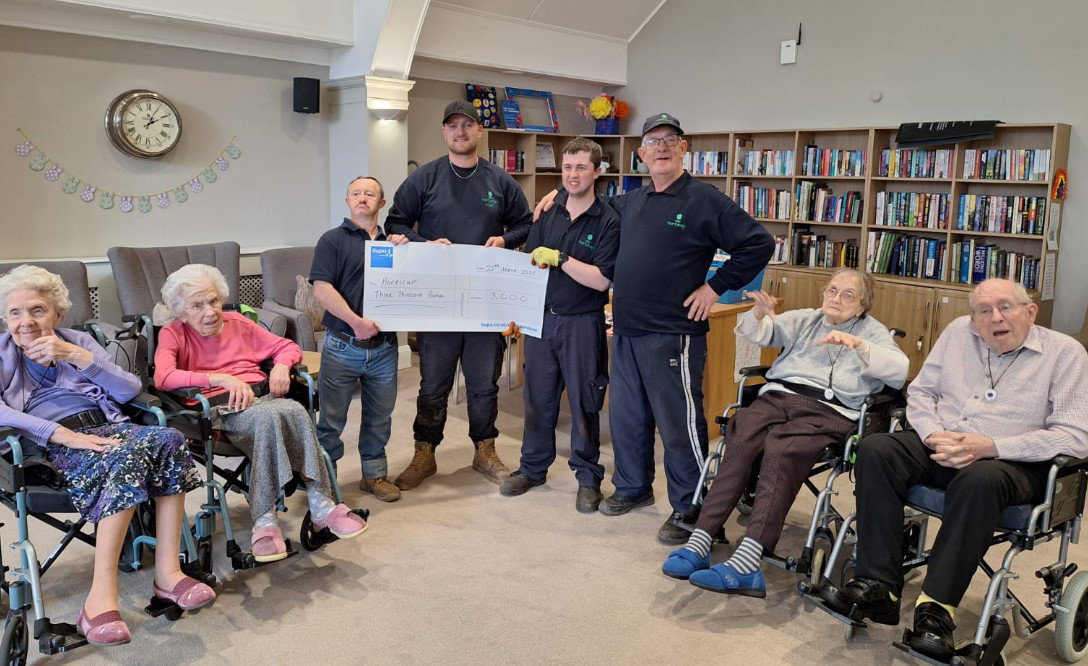On 22nd March, a satisfyingly full Ripon Cathedral was treated to St Cecilia Orchestra’s rich performance of its spring concert, Over Land and Sea, conducted by Xenophon Kelsey.
The programme began with what almost certainly might have been the Ripon prèmiere of Bränningar (Breaking Waves), a late 19th-century symphonic poem by the Swedish composer, Helena Munktell. Composed a few years after her studies in Paris, and a full decade before Debussy’s La Mer, this single-movement work combines Wagnerian-influenced language and French colour with hints of a Nordic accent, all executed with assured and imaginative handling of the orchestra. Melodically dominated by a dotted falling figure, it might be said to stand between Mendelssohn’s Hebrides Overture (which SCO performed in January) and the Debussy itself (ditto, last April). This performance was distinguished by beautifully warm sounds and impressive ensemble throughout, the woodwinds bringing life to the ever varying colours. The Cathedral acoustic damped just a little of the sea spray, but this should take nothing away from a splendid account of this fine work.
Next came Elgar’s Sea Pictures, sung by mezzo soprano Beth Taylor – a finalist in Cardiff Singer of the World, who last year had stepped in for an indisposed Alice Coote in the Ripon Concerts series, thence being tempted into a return visit. What a lucky treat for this evening’s audience: she lived the words with captivating intensity, using her remarkable voice – commanding across two octaves – in the service of powerful musicianship. The orchestra, meanwhile, was magnificent in accompaniment, continuing its sense of warmth and colour from the Munktell, all while leaving Taylor space to lead. Sea Slumber-Song was deeply moving, its broad sweep sweetly contrasted by the lighter, delicate touch of In Capri. Sabbath Morning at Sea displayed powerful storytelling; Where Corals Lie took a slightly slower tempo than usual, but in persuasive service of the words, with impressive ensemble at the allargandos and delightful turns from woodwinds, and solo violin and cello. The Swimmer saw all the performers revel in its drama and rollicking good tune, capped by Taylor’s thrilling top A at the end.
If Elgar took his inspiration from the Malverns, Gustav Mahler transcribed the sounds he heard in the Austrian countryside, depicted here in his Symphony No. 1. The string harmonics and woodwind calls transported the audience straight to his technicolour evocation of nature, abetted by offstage brass fanfares, fresh clarinet cuckoos and gently ominous lower strings, before Kelsey’s beautifully subtle tempo control ushered in the rustic first subject. This rich colour and classy sense of growth continued throughout the exposition, carefully noting Mahler’s gentle accents, leading into the development. The harp, crystal clear throughout the evening, launched the momentum of this section along with some fine, smooth work from the French horns. The heralding of the recapitulation, while exciting, was careful not to overplay its hand for later, while the orchestra shone in the full passages leading to the playful ending – as clear as could be wished for in this space.
The second movement began muscularly, in due course finding a real swagger; a neat transition from the horn led to a sweet contrast in the trio, launched by the cello pizzicato and expressive playing from the winds. The orchestra was responsive to Kelsey’s skilful negotiation of the delicate corners, all the way to the boisterous finish.
The timpani and double bass made a beautifully deadpan start to the hunter’s funeral march of the third movement, faithfully maintained by the succeeding instruments and neatly offset by the jaunty oboe. Thus, when the Czech folk band entered the scene, Mahler’s marking Mit Parodie was that much more telling, the percussion and the trumpets (carefully matching the oboes) simply irresistible. In relief to this, the trio section’s folk-song emerged gently in the strings, with beautiful comment from the bassoon and flutes. The transition back to the funeral march, then the sudden tempo surge and the final fade to nothing, were all sublime.
The sudden, urgent drama of the Finale was now a chance for the orchestra to show off its punch, without neglecting the details of dynamic, colour and breathing space. The tender second subject showcased its melodic capacity, particularly in the sul-G violins, while the trumpets and trombones were incisive in propelling the development towards the first ‘breakthrough’ moment. After this, the ‘dawn’ opening returned with a dark shimmer, aided by magically distant horns and evocative flute and piccolo. A quiet urgency awoke the violins, before the violas made a gripping return to the first subject. From here, the music rose inexorably to its Everest (or perhaps its Groβglockner), the upstanding horns and thrilling trumpets slicing their triumphant themes through the texture until the final, exuberant octave drop.

